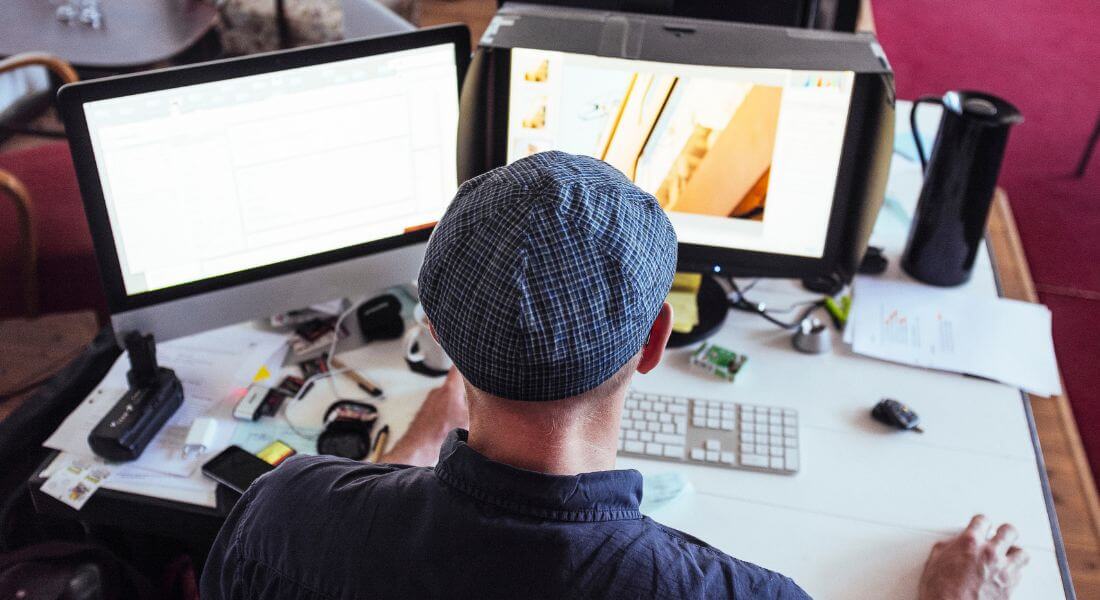
In a world overflowing with data, technical jargon, and abstract concepts, communicating clearly and effectively has become more crucial and more difficult than ever before. Whether you’re explaining how a vaccine works, the intricacies of blockchain, or the fine print of an insurance policy, your audience is likely to lose interest or feel overwhelmed if the information isn’t made accessible. This is especially true in industries like healthcare, finance, technology, and education where ideas can be multi-layered, time-sensitive, and often too complex for plain text or static visuals alone.
That’s where visual metaphors shine. Animators use these imaginative, symbolic visuals to translate challenging subjects into relatable, easy-to-understand narratives. Instead of telling audiences what something is, they show what it’s like turning an abstract concept into something concrete, visual, and emotionally resonant. Whether it’s portraying cybersecurity as a digital fortress or the human immune system as a bustling defence army, visual metaphors don’t just explain they engage, persuade, and stick in the viewer’s memory long after the screen goes dark.
In this article, we’ll explore the art and science behind how animators craft these visual metaphors, why they’re such powerful communication tools, and how they’re transforming explainer videos across different sectors. You’ll also learn how partnering with an experienced animation studio can help elevate your messaging by turning complexity into clarity with creativity at the core.
Why Visual Metaphors Work So Well
Visual metaphors are remarkably effective because they help translate complex, abstract, or technical ideas into something instantly recognisable. At their core, metaphors operate on the classic “this is like that” principle drawing parallels between something new and something familiar. But when this concept is brought to life through animation, it becomes far more than a literary device; it turns into a powerful visual storytelling tool.
Instead of simply telling viewers that cloud storage is secure, for example, you can show it as a locked vault or a guarded fortress in the sky. This visual cue allows the audience to grasp the concept almost instantly because they already understand what a vault or fortress does. It eliminates the need for lengthy explanations and makes the content more accessible and engaging.
In short, visual metaphors work so well because they merge simplicity with creativity, clarity with engagement, and logic with imagination. They help viewers connect the dots faster, making even the most complicated topics feel approachable and even enjoyable to learn.
When used strategically, visual metaphors can:
- Simplify abstract or technical concepts
- Make information more relatable and memorable
- Speed up understanding by tapping into intuitive thinking
- Add emotional or cultural resonance to your message
The brain processes visuals 60,000 times faster than text, and metaphorical imagery provides a shortcut to comprehension. This is why visual metaphors are so widely used in explainer animations especially for audiences who need clarity fast.
Crafting the Right Metaphor: A Creative Process

Developing the right visual metaphor isn’t a matter of chance it’s a deliberate and thoughtful creative process that blends storytelling, visual communication, and strategic thinking. Professional animators don’t just pick metaphors that look appealing; they choose ones that elevate meaning, resonate with the target audience, and support the narrative goal. Here’s a closer look at how they approach this essential part of the animation journey:
- Understand the Core Concept: Before a single frame is drawn, animators dive deep into the subject matter to fully understand what needs to be communicated. This involves collaborating with subject matter experts, scriptwriters, or clients to extract the core message behind the content. Whether the topic is the blockchain’s decentralised nature, the intricacies of a medical procedure, or how a financial service works, animators need a clear and simple interpretation of the idea first. Stripping the message down to its essence allows for more creative and accurate metaphor construction because when the foundation is strong, the visuals can be both imaginative and instructive.
- Identify Familiar Comparisons :Once the core idea is defined, the animator’s next task is to find a metaphor that connects that abstract idea to something the audience already understands. This is often the most creative part of the process. Common everyday experiences like riding a lift, planting a seed, navigating a map, or assembling a puzzle can be powerful metaphors when mapped onto more complex systems. The key here is relatability: the chosen metaphor should be universally recognisable, culturally appropriate, and visually adaptable. The stronger the audience’s existing mental model, the easier it will be for them to grasp the new information.
- Align with Tone and Audience: Not all metaphors work for all audiences. A playful visual comparing machine learning to sorting socks might resonate in a classroom setting but fall flat in a high-level corporate boardroom presentation. That’s why tone and audience are critical considerations during metaphor development. Professional animators assess who will be watching, what tone the brand or message calls for, and how the metaphor can align with those expectations. For example, healthcare metaphors tend to be softer and more reassuring, while tech-focused animations may lean towards sleek, futuristic visuals. The balance of playfulness, formality, and clarity must match the viewer’s mindset and context.
- Design with Purpose: After selecting a metaphor, the animation team brings it to life through purposeful design. Every element colours, shapes, transitions, movements, and even the soundtrack is aligned to reinforce the metaphor. For instance, if data movement is represented by a train system, the motion might follow tracks, stops may symbolise checkpoints or servers, and collisions could represent cybersecurity threats. This unified approach ensures the metaphor isn’t just a static symbol it becomes a dynamic storytelling device that guides how information is revealed and understood. A well-executed metaphor doesn’t just add visual interest; it shapes the entire narrative rhythm and viewer experience.
Real-World Use Cases of Visual Metaphors
Visual metaphors aren’t just clever design tricks they’re strategic communication tools that help bridge the gap between complex subjects and audience understanding. Let’s explore how they play a transformative role across three major industries, turning abstract or intimidating concepts into relatable visual narratives:
- Healthcare: Turning Complexity into Clarity
In the medical field, information can often feel overwhelming especially for patients with little to no clinical background. Visual metaphors help demystify everything from disease progression to treatment mechanisms. For instance, cancer cells might be represented as invaders attacking a city, while chemotherapy or a vaccine is shown as a defending army or a protective shield. This metaphorical framing not only simplifies biological processes but also reduces fear and fosters emotional reassurance.
By transforming microscopic or internal processes into external, story-driven imagery, patients can visualise what’s happening in their bodies. Whether it’s showing cholesterol as traffic clogging up an artery “highway” or illustrating white blood cells as firefighters battling infection, these metaphors make health information more digestible, less frightening, and ultimately more empowering. - Finance: Making the Invisible Feel Manageable
Finance is filled with abstract terms, numerical data, and long-term consequences making it one of the most challenging subjects to explain quickly. This is where visual metaphors shine. Concepts like budgeting can be shown as filling containers, while credit scores are visualised as ladders or dials. Compound interest might be portrayed as a snowball gaining momentum down a hill, and inflation as a balloon swelling until it bursts. These visual cues help audiences whether they’re investors, students, or everyday consumers grasp financial behaviours and risks without feeling overwhelmed. It’s not just about simplifying data, but about creating intuitive mental models that viewers can remember and apply to their real-world decisions. - Technology: Making the Digital Tangible
The tech industry deals with some of the most abstract and fast-evolving topics: artificial intelligence, cloud infrastructure, blockchain, cybersecurity, and more. Visual metaphors help make these high-concept ideas feel familiar. A server might be shown as a digital warehouse filled with files, while algorithms can be visualised as gears or puzzle pieces fitting into place. Cloud computing could appear as a floating, interconnected library in the sky, and data encryption as a locked vault or maze.
By grounding intangible systems in physical analogies, tech brands and educators can explain how products work without resorting to technical jargon. This not only boosts audience comprehension but also builds trust people feel more confident when they understand what’s “under the hood.”
Avoiding Common Pitfalls

While visual metaphors can be incredibly powerful tools for simplifying complex information, they’re not without risks. If not used thoughtfully, they can easily backfire confusing your audience, diluting your message, or even conveying the wrong meaning altogether. That’s why successful animation teams approach metaphor development with care, strategy, and a healthy dose of user empathy.
Here are some of the most common pitfalls animators must avoid and how to steer clear of them:
- Avoid clichés that feel too generic or tired
Overused metaphors (like light bulbs for ideas or puzzle pieces for problem-solving) can feel uninspired and reduce viewer engagement. When the metaphor is too familiar, it risks blending into the background rather than enhancing understanding. Fresh, creative comparisons that still feel intuitive can elevate the content and keep viewers interested. - Ensure the metaphor doesn’t misrepresent the concept
A metaphor should clarify not distort the core idea. If the comparison is too far removed from the actual function or meaning, it can lead to misunderstandings. For example, showing data as physical mail might work for email, but could be misleading for real-time encrypted data streaming. Accuracy matters, especially in fields like healthcare or finance where precision is critical. - Balance creativity with clarity
It’s tempting to get overly creative with metaphors, especially in visually driven projects. But if the visuals become too abstract or artistic, they might sacrifice clarity. The best metaphors strike a balance between imaginative visuals and straightforward meaning, ensuring that creativity doesn’t get in the way of comprehension. - Make sure visual transitions flow logically
In animated content, how one scene transitions into another is just as important as the scenes themselves. If the metaphor shifts too suddenly or inconsistently, it can confuse viewers and interrupt the narrative flow. Smooth transitions, consistent visual language, and narrative cohesion are key to maintaining engagement and clarity throughout. - Test and gather audience feedback
What makes sense to the animation team or client might not always land with the target audience. That’s why testing is essential. Sharing drafts with focus groups or beta viewers helps identify unclear moments, confusing visuals, or missed emotional beats. Feedback ensures the metaphor hits the mark and actually enhances the viewer’s understanding not just the aesthetics.
In short, thoughtful execution is everything. When visual metaphors are used with care and tested with real audiences, they become a powerful bridge between complexity and clarity. But when rushed or misapplied, they can just as easily create noise instead of meaning.
Why Metaphor-Driven Animation Drives Better Results

Explainer videos that harness the power of thoughtful visual metaphors don’t just make complex ideas easier to grasp they actively enhance viewer experience across the board. Metaphor-driven storytelling helps break down barriers to understanding, particularly when audiences are short on time or overwhelmed by jargon. When done right, these animations can transform even the most technical or abstract content into something memorable, emotionally resonant, and easy to act on. Rather than relying solely on facts and features, metaphor-driven animations invite the audience into a story they instinctively understand. This narrative approach not only clarifies the message but creates a stronger emotional connection making viewers far more likely to stay engaged, absorb the information, and remember it later.
Here’s what a well-executed visual metaphor can achieve:
- Increase watch times
Viewers are more likely to stay with a video that feels engaging, visually dynamic, and easy to follow. Metaphors help create that sense of flow and intrigue, turning passive viewers into active participants who want to see how the visual story unfolds. - Improve recall rates in educational content
By linking new information to something familiar, metaphors create stronger memory associations. This is especially useful in e-learning, training videos, and health communication where retention of core ideas is crucial. - Reduce bounce rates on landing pages
Visitors who encounter metaphor-rich animations on landing pages tend to stick around longer. The video captures attention immediately and makes complex offerings feel simpler and more approachable, encouraging users to explore further. - Convert abstract features into relatable benefits
In industries like SaaS, healthcare, or finance, it’s easy for audiences to get lost in technical features. A visual metaphor bridges that gap by showing not just what something does, but why it matters in real-life terms.
This approach is particularly powerful in B2B and healthcare marketing, where audiences are often faced with dense material and limited time. Whether it’s explaining how a medical device works or showcasing an enterprise platform’s capabilities, metaphor-driven animation helps audiences connect the dots faster and with greater confidence.
In essence, metaphors humanise complexity. They transform cold data and hard-to-digest information into stories people can see, feel, and understand making them a strategic asset for brands that want to inform, inspire, and convert.
Conclusion
In today’s fast-paced digital landscape, the ability to explain complex ideas clearly isn’t just a skill it’s a competitive advantage. Visual metaphors offer a proven way to cut through confusion and deliver meaning instantly. Whether you’re explaining how a medication works, how a financial tool functions, or how your technology stands out, well-crafted animation can make the difference between being understood or overlooked. At the heart of it all lies the power of a simple, relatable visual metaphor one that speaks directly to your audience.
As animation continues to evolve, brands that master metaphor-driven storytelling will lead the way in clarity, engagement, and trust. In a world full of noise, it’s the simplest visuals that speak the loudest.
Final Thoughts: The Subtle Genius of Metaphor in Animation
Visual metaphors are more than creative flourishes they are tools for understanding. They allow complex or abstract subjects to be reframed in ways that feel familiar, intuitive, and easy to digest. When used effectively, a single metaphor can explain what paragraphs of text might struggle to convey. In the world of animation, this isn’t just about aesthetics it’s about building clarity, trust, and emotional connection.
When animation is paired with the right metaphor, it becomes a bridge between complexity and clarity, helping brands communicate their value in an engaging and memorable way. Get in touch with our animation company in London and let us help you craft explainer videos that truly connect. With the right visual metaphor, your message won’t just be understood it’ll stick with your audience long after the video ends.

